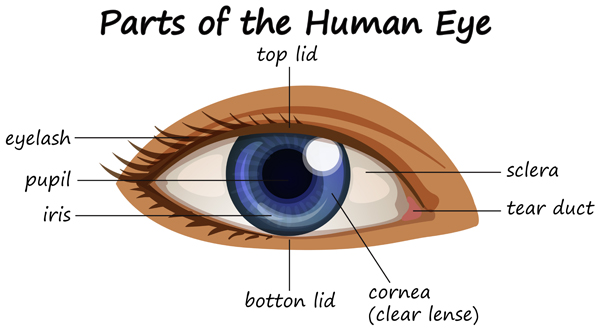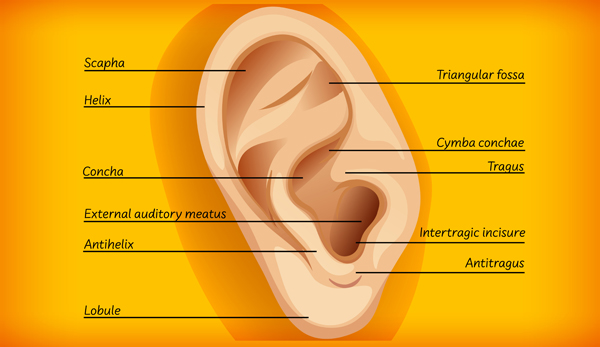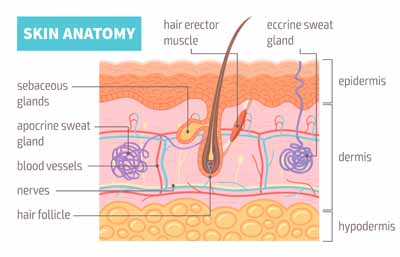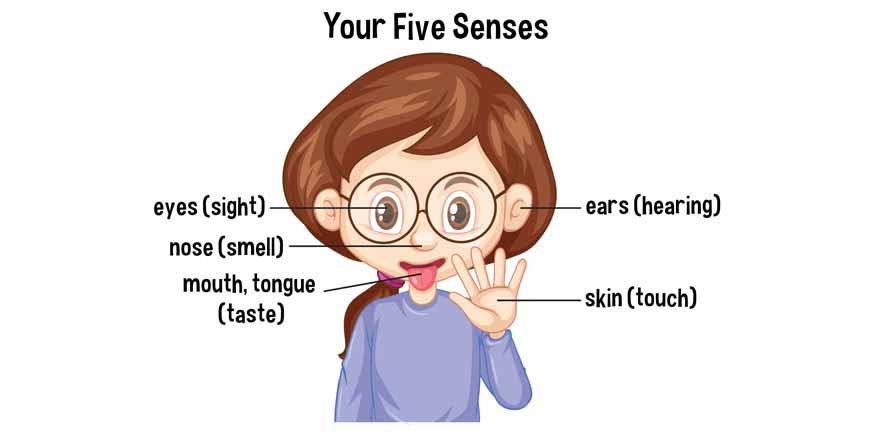The human body is equipped with an intricate system of sensory organs that allow us to interact with the environment. The organs such as eyes, ears, nose, tongue and skin are known as sensory organs. These sense organs provide us with the ability to perceive and respond to the world around us. Sense organs are specialised structures in the body that detect and process various stimuli from the environment.
Each sense organ is attuned to specific types of stimuli: the eyes to light, the ears to sound waves, the nose to chemical particles in the air, the tongue to dissolved substances, and the skin to mechanical and thermal changes. These organs contain receptors that convert these stimuli into electrical signals, which are then transmitted to the brain for interpretation.
Functions of Five-Sense Organs
Eyes: The eye detects light and converts it into electrical signals sent to the brain. The intricate structure of the eye includes the cornea, lens, retina, and optic nerve working together to focus light and produce clear images. The eyes are not only to see but also to perceive depth, colour, and motion, enabling us to navigate and understand our surroundings.

Ears: The ears detect sound waves and are integral to our sense of balance. Sound waves enter the ear canal and vibrate the eardrum, which in turn moves the tiny bones in the middle ear. These vibrations are transmitted to the cochlea in the inner ear, where hair cells convert them into electrical signals. The brain interprets these signals as sounds, allowing us to communicate and react to auditory stimuli. Additionally, the vestibular system in the inner ear helps maintain equilibrium.

Nose: The nose is the primary organ for the sense of smell. It contains olfactory receptors that detect airborne chemicals. When we inhale, these chemicals bind to receptors in the nasal cavity, triggering signals sent to the brain’s olfactory bulb. This process allows us to distinguish thousands of different scents. The sense of smell is closely linked to taste and can trigger memories and emotions, playing a significant role in our perception of flavour and our overall sensory experience.

Tongue: The tongue is covered with taste buds which contain receptors for the five basic tastes: sweet, sour, salty, bitter, and umami. These taste receptors send signals to the brain, helping us identify and enjoy various flavours. The sense of taste is vital for detecting nutrients and avoiding harmful substances. It also enhances our appreciation of food and influences our eating habits.

Skin: The skin is the largest organ in the body and is responsible for the sense of touch. It contains numerous receptors that detect pressure, temperature, pain, and vibration. These receptors send signals to the brain, providing us with tactile information about our environment. The sense of touch is essential for physical interaction, protection, and emotional bonding. It allows us to feel textures, warmth, cold, and other sensations that contribute to our daily experiences.

The importance of sense organs cannot be overstated. They are critical for our interaction with the world and our overall well-being. Each sense organ contributes to our ability to perceive, understand, and respond to our environment. They help us recognise danger, find food, communicate, and experience pleasure.
The uses of sense organs extend beyond basic survival. They enhance our quality of life by allowing us to enjoy the beauty of nature, the complexity of music, the aroma of delicious food, the taste of a well-cooked meal, and the comfort of a loved one’s touch. These sensory experiences enrich our lives and provide a deeper connection to the world around us.
There are various types of senses beyond the traditional five. These include the sense of balance (vestibular sense), the sense of body position (proprioception), and the sense of internal physiological conditions (interoception). Each of these additional senses plays a unique role in maintaining our body’s homeostasis and overall functioning.
The function of the five sense organs is intrinsic to our daily existence and overall human experience. These remarkable organs enable us to interact with the environment, navigate our surroundings, and communicate effectively with others. Each of the 5 sense organs including eyes, ears, nose, tongue, and skin plays a unique and essential role in how we perceive the world.
At Mother’s Pet Kindergarten, we understand the significance of nurturing these senses in young children. By providing a stimulating and supportive environment, we help children explore and develop their sensory abilities, laying the foundation for lifelong learning and curiosity. Our approach emphasises the holistic development of children, ensuring they grow up with a keen awareness and appreciation of the world around them.











Recent Comments